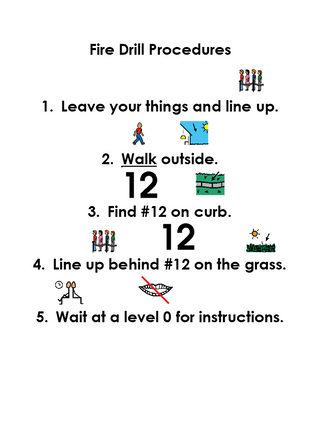CALM THE CHAOS WITH CLASSROOM PROCEDURES AND ROUTINES
- Laura

- Sep 28, 2024
- 3 min read
If your day feels chaotic, and you feel like you're constantly just trying to keep students where they need to be, I will let you in on a little secret that I've learned the hard way.
You need to teach your procedures and routines explicitly.
I know this seems obvious, but let's break down what this truly looks like in the special education classroom.

What are classroom procedures?
A procedure is not a rule or expectation, although those also need to be explicitly taught; it's a routine with multiple steps. Classroom procedures support classroom management by providing structure, consistency, and predictability in the learning environment. They help students understand what is expected of them in various situations, reducing confusion and potential misbehavior. By establishing and teaching procedures, teachers can create a more organized and efficient classroom, leading to improved student engagement and academic performance.
Here are a few examples of a few procedures that I explicitly taught at the beginning of the year.
Morning routine
Lunch routine
Free time routine
How to go to class/transition in the hall
End of the day routine
Fire drills
Assemblies
Reinforcement systems/token charts
How do I teach classroom procedures?
First, you need to identify your procedures throughout the day.
Think about the different moving parts of your day. How do students enter the classroom? What do they do when they come inside? How should they gather materials? What should they do if they finish their work early? And so on.
Second, task analyze each procedure or, in other words, break it into steps. This will help you to identify potential challenges that students may encounter during the procedure. Then, create visuals or a checklist to help teach the procedure. These visuals will guide your students through the process and reinforce their understanding of the steps involved.
Third, explicitly teach students the steps of each procedure. And for the most important part, practice, practice, and practice. Just like when teaching any skill:
1) Model
2) Practice together- you can provide verbal or visual prompts as students go through the steps
3) Practice independently
Provide examples and non-examples, paired with specific feedback.
There are many different ways to teach the procedure, including:
Modeling
Video modeling
Role play and practice
Presentations (Google Slides or PowerPoint)
Visual or written checklists
Social stories

Common Classroom Management Mistakes
A common mistake teachers make is not breaking down procedures into step-by-step, manageable parts. Many of our students with disabilities need support with multistep directions. Sometimes, we get ahead of ourselves and spit out multiple steps of a routine and assume that our students can follow along, but remember it's best to provide one step at a time until routines are solid.
Make sure your procedures are not too complex. Whenever possible, simplify the steps so that they are clear and easy to follow. If a procedure has too many steps, consider breaking it into two different routines.
Remember that students can get overwhelmed if you teach too many procedures at once. Teach procedures gradually and continue practicing until they are mastered. In addition, you need to enforce the procedures all day, every day. Students will not see the importance if a procedure is not enforced every time.
Another mistake I commonly see when visiting classrooms is teaching the procedure for a day or two and then moving on. Classroom management is an all-year process. You will need to continue working on teaching and reviewing procedures and routines during the first few weeks of school, after long breaks, and at other points in the year when student behaviors start to pop up.
Visuals, visuals, or visuals. Take the extra time to create visual supports for your classroom procedures and post them in your classroom. This will make it much easier for your students to follow along and remember procedures.
Finally, when students are learning procedures and throughout the year, when you see them rocking it, provide positive praise and reinforcement. This will help increase their motivation and is a must for classroom management.
The key to a successful and organized classroom lies in the explicit teaching of procedures and routines. By breaking down daily tasks into manageable steps, providing visual supports, and practicing consistently, educators can set their students up for success. Remember, classroom management is an ongoing process that requires patience, consistency, and positive reinforcement. However, by investing time in teaching and reviewing procedures, you can create a structured and supportive learning environment for all students.
















Comments